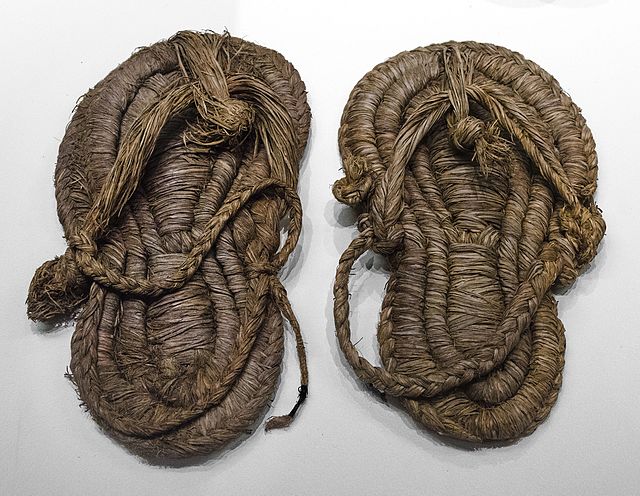Shoelaces, also called shoestrings or bootlaces, are a system commonly used to secure shoes, boots, and other footwear. They typically consist of a pair of strings or cords, one for each shoe, finished off at both ends with stiff sections, known as aglets. Each shoelace typically passes through a series of holes, eyelets, loops or hooks on either side of the shoe. Loosening the lacing allows the shoe to open wide enough for the foot to be inserted or removed. Tightening the lacing and tying off the ends secures the foot firmly within the shoe. The laces can be tied in different shapes, most commonly a simple bow.
Black shoelace
Three shoelaces tipped with three different aglets: copper, plastic, and brass
A knot squashes the cord and this stops the lace end passing through the knot
Ian's Secure Shoelace Knot used on a pair of safety boots
A shoe is an item of footwear intended to protect and comfort the human foot. Though the human foot can adapt to varied terrains and climate conditions, it is vulnerable, and shoes provide protection. Form was originally tied to function, but over time, shoes also became fashion items. Some shoes are worn as safety equipment, such as steel-toe boots, which are required footwear at industrial worksites.
A variety of shoes displayed at the Nordic Museum, including models from 1700 to the 1960s.
The oldest known leather shoe, about 5500 years old, found in Armenia
Esparto sandals from the 6th or 5th millennium BC found in Spain
Footwear of Roman soldiers (reconstruction)








